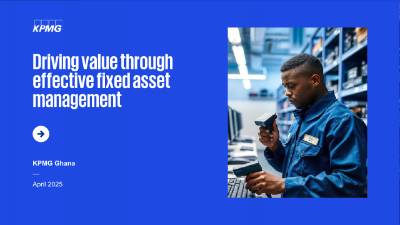Fixed assets are the backbone of businesses across the globe, serving as critical resources for operations, production, and service delivery. In Ghana, the significance of fixed assets is evident in the financial statements of companies listed on the Ghana Stock Exchange (GSE). Collectively, these companies report total assets valued at approximately GHS 1.79 billion, with fixed assets accounting for GHS 456 million, representing 25% of total assets. This emphasises how essential fixed assets are in driving business operations and contributing to value creation.
When analysed by industry, the reliance on fixed assets varies significantly. Manufacturing leads with a fixed asset-to-total-assets ratio of 85%, reflecting its asset-intensive nature, followed by Pharmaceuticals (60%) and Mining (53%).
Telecommunication, Real Estate, and Oil & Gas also exhibit substantial reliance, with ratios of 47%, 46%, and 36% respectively.
In contrast, Banking and Insurance demonstrate a lower ratio of 5%, indicative of their capital allocation to financial instruments rather than physical assets. Despite the significant role fixed assets play in organisational success, many businesses struggle to manage them effectively.
- Inefficient Asset Management Frameworks
- Absence of Asset Management Systems
- Financial and Compliance issues
This article delves into these challenges, offering insights and strategies to help organisations optimise their fixed asset management practices, unlock value and ensure sustainable success.
How can robust asset management practices add value to your organisation?
Effective asset management involves more than just keeping records; it creates a culture of transparency and accountability. With a clear view of asset locations, conditions and utilisation, organizations can optimize resource allocation, directing funds and personnel to where they’re most needed rather than wasting them on inefficiencies or redundancies. Maintenance practices also become streamlined, shifting from reactive fixes to proactive schedules that extend asset life and reduce unexpected downtime.
Ultimately, these improvements translate into significant cost savings, slashing both operational expenditure (OPEX) by minimizing inefficiencies and capital expenditure (CAPEX) by avoiding premature replacements or over-investments.
Joyceline Coleman
Partner, Advisory
KPMG in Ghana

